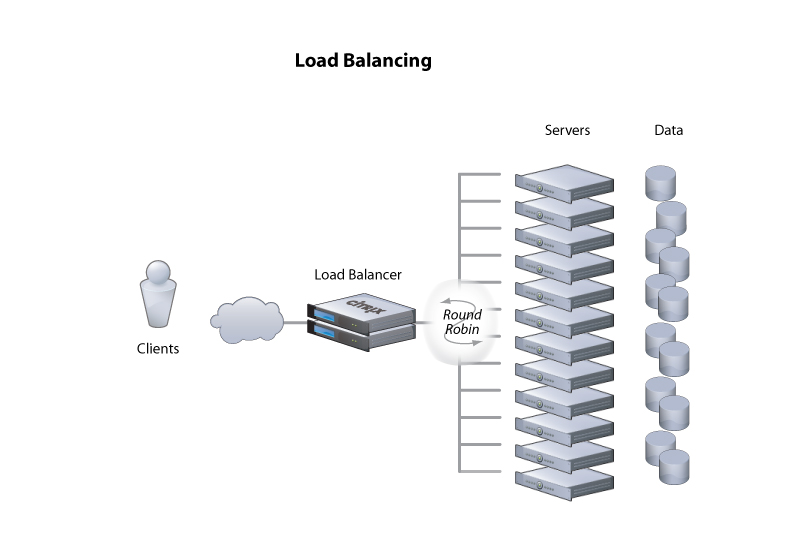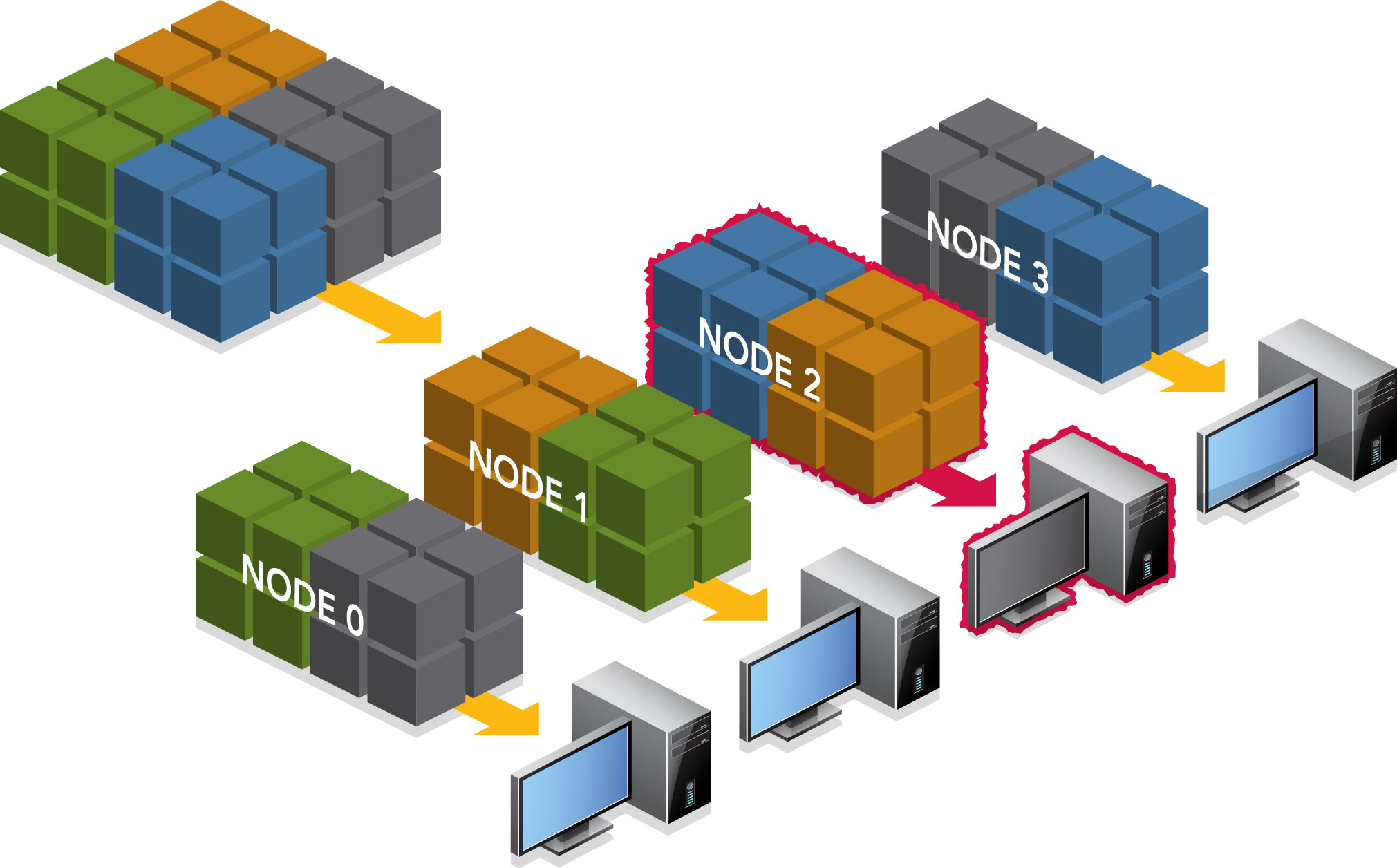Virtual Clusters is the same concept as the physical clusters but each slave is a virtual machine. They are usually clustered in a single host and all powered by the machine. The VMs are logically connected to a virtual network across a physical network.
The Benefits of having virtual clusters are:
- Load Balancing
- Server Consolidation
- Fault Tolerance
- High Availability
There will be times where a single request from a client to a node will overload it and bottleneck the performance, so Load Balancing was created. Load Balancing distributes the workload to multiple nodes in order to achieve efficiency and decrease overall load.

As you can see this type of load balancing is called Round Robin. In this form, the client sends a request to the load balancer and the load balancer sends the request across multiple nodes. When the node gets the request, it tells the load balancer if it is suited to process it or not. If not then it sends the request back and the balancer bounces it back to another node that is capable of doing the request thus forming the Round Robin.

In the picture four nodes are setup as four equal parts of one piece of data. Depending of its design, it can be either a Raid configuration or Fault Tolerance. Imagine the four colored block is the data, each node has 2 different pieces of the data making 2 copies of it. If node 0 fails, node 1 and node 3 will pick up the fault since each have half of the data is contained. If each node has a disk drive and the data is split into 4 parts. Each node will have a replica of 2 different parts, so if the data is corrupted it will be retrieved by two other nodes. This is a form of Raid and Fault Tolerance protection.
